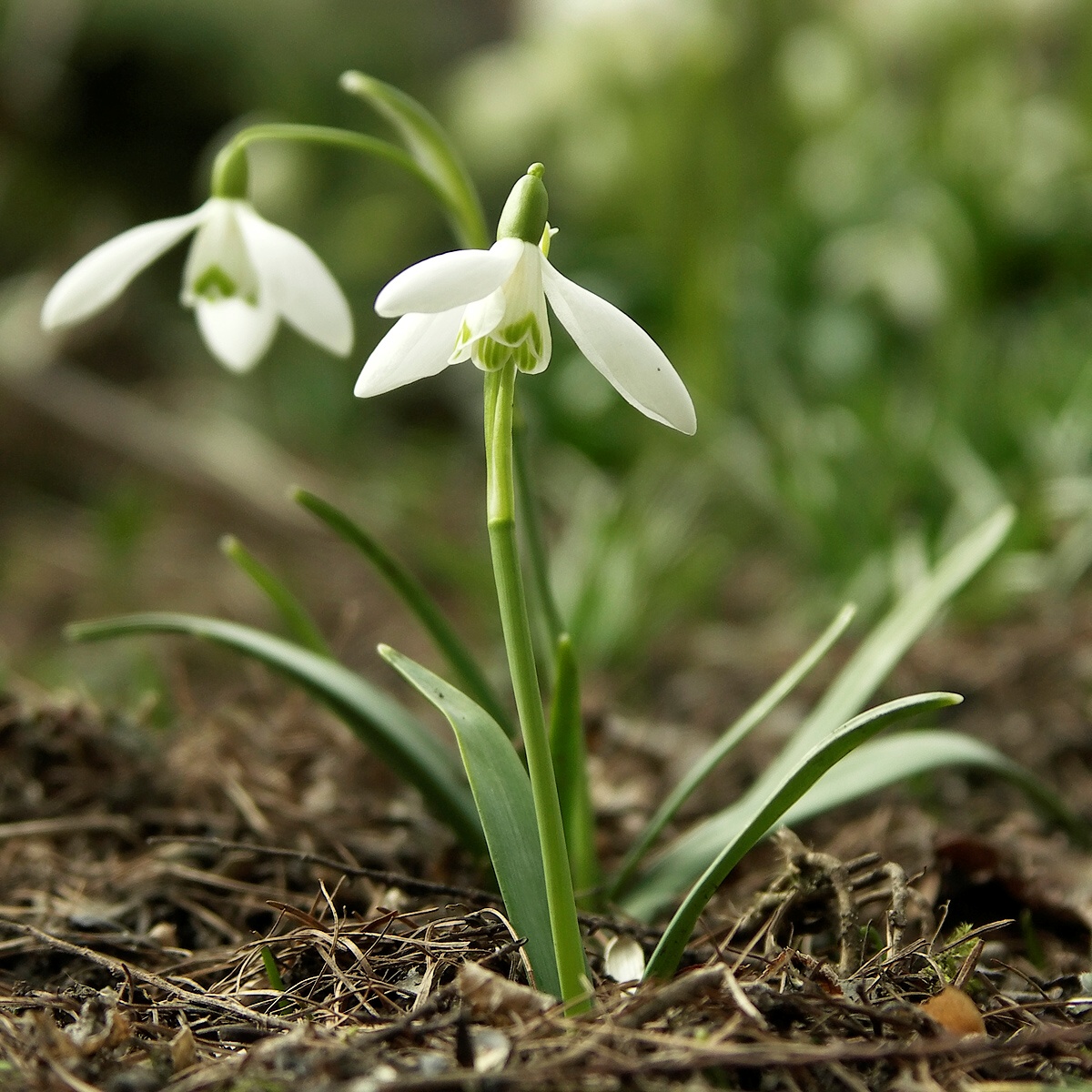Today, while dancing amidst hundreds of snowdrops in the pre-spring sun and brisk breezes, I spotted a honeybee.
Well, no, that’s not true. I wrote that line a little less than a year ago and never completed the essay. Today it is cloudy and bees tend to stay close to home under those conditions. The nearest bees, to my knowledge, come from a pair of hives perhaps a mile away in a city park. But there are breezes a-plenty today, though not brisk–it is over sixty degrees and glorious–and yes, hundreds of snowdrops are dancing.
It’s only January! And many of these little beauties have been blooming for a month, oblivious to the relentless freeze/thaw cycle of this strange winter. (It’s the end of January and I have never gotten my sled out!)
Snowdrops (Galanthus nivalis) are amazing; they have always been magical and wondrous to me, the first flowers of the year, shouting out life in a seemingly dead landscape.

In Michiana where I grew up, I could expect to see these lovely harbingers breaking out of the snow in February, even though we had a good six more weeks of winter. Hard crusts of ice never deterred them. In more recent years they have come up earlier, and here in Central Indiana, I have come to expect at least some in late January; occasionally they have poked up as early as around the New Year. This year I had some budding at Christmas. I worried for them, but I need not have. Snowdrops have antifreeze in their leaves. The early bloomers, having survived several repeated bouts of nights in the ‘teens, are as bright and bouncy as they were a month ago. Snowdrops not only assure us of spring’s future arrival, but they generally last a long time, long enough to welcome the larger, more colorful daffodils and the delicate crocus that normally begin to appear in March. (This year, however, I have recently seen the odd daffodil in bloom. Something is clearly amiss with our climate.)
Hoping soon to begin my own hive, I have taken an interest in the hives of honeybees in the afore-mentioned city park. A few years ago I noticed that some bees were out and about in very early spring with little hope of finding the sustenance they sought. I offered some of my snowdrops to the park, which they accepted. The transplants are doing very well and have spread (they are blooming as I speak). That’s the other wonder of snowdrops–how they multiply! The majority of my hundreds came from three small clumps dug up from my homeplace twenty years ago. My backyard is now filled with them, and more have migrated around to the front. This puzzled me for years until I read that the snowdrop’s tiny seeds have a substance attractive to ants, and so they are spread by the insects. The bulbs, too, multiply, and these plants are survivors! The plant world offers role models for us all.

I think it’s cool that you donated some of these guys to the local city park so that the bees have something to eat, close at hand, when they wake up from a winter huddle.
You are the Jane Appleseed of snowdrops as the plants you gave me are doing fine here in historic Irvington. Thanks for this lovely essay.